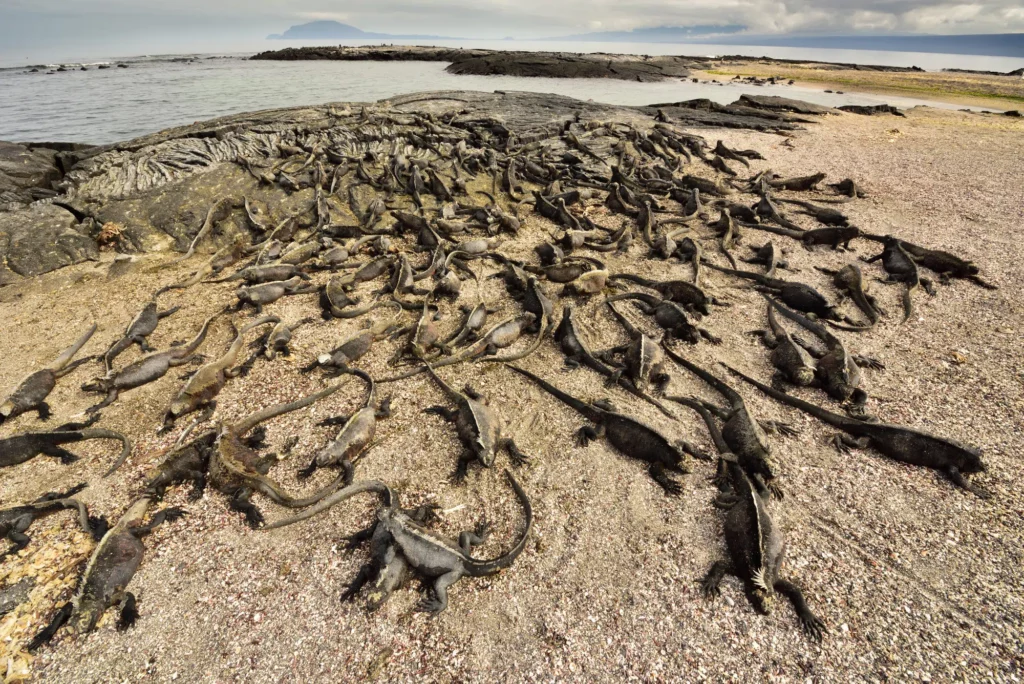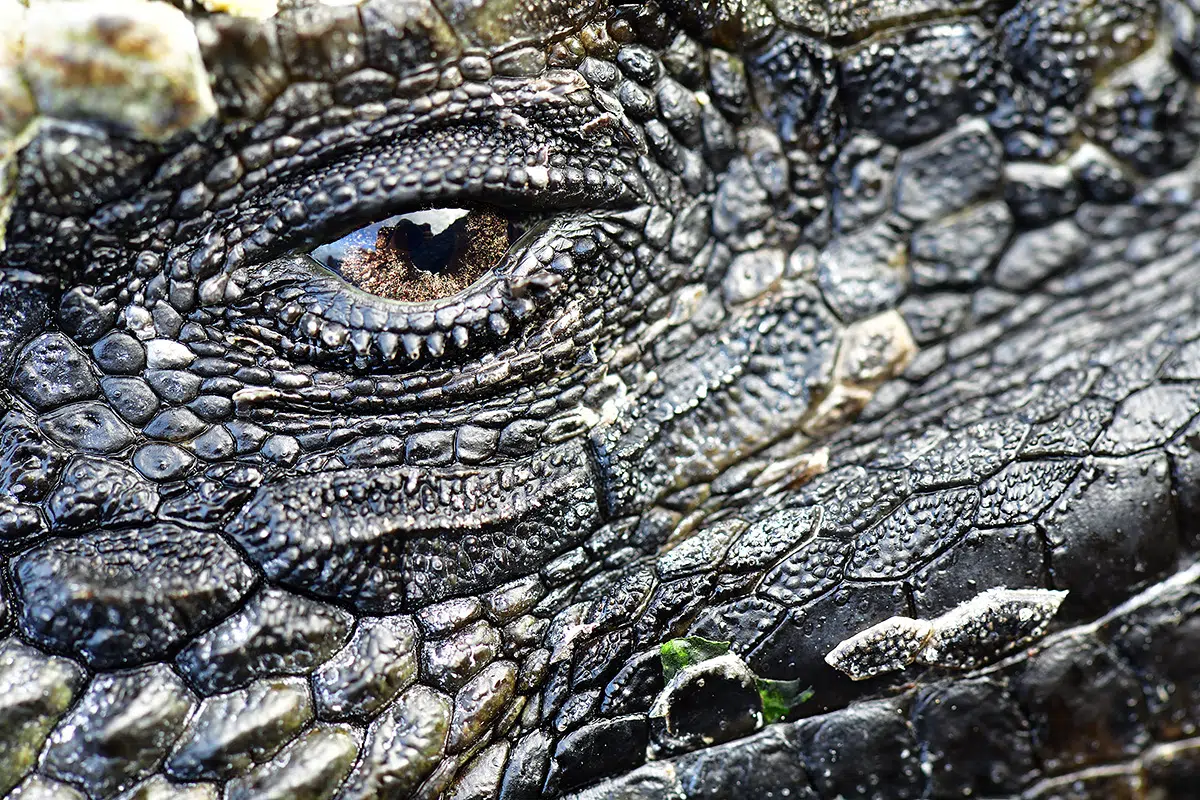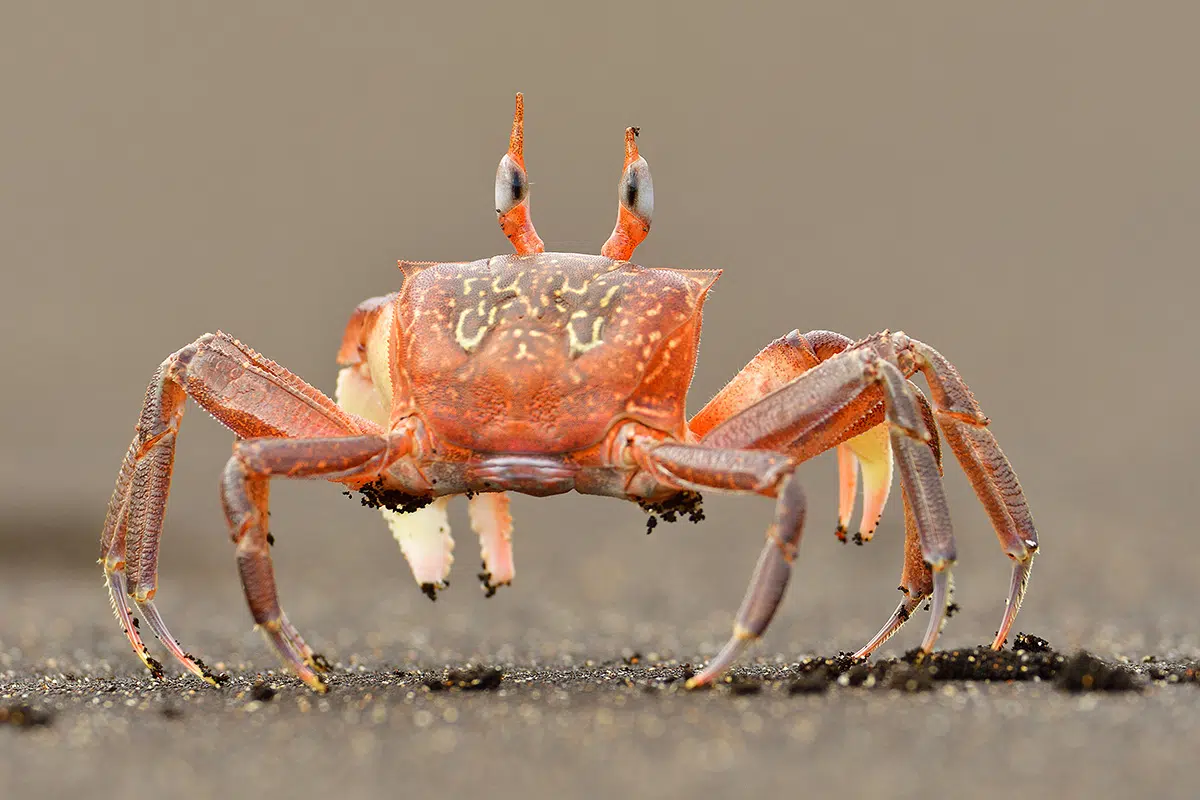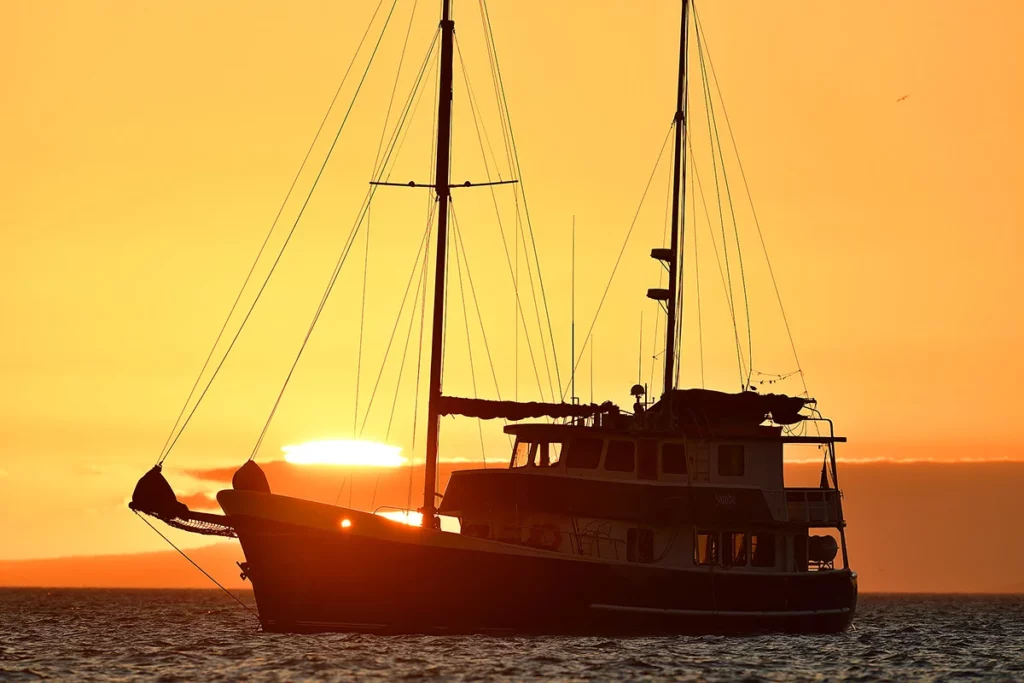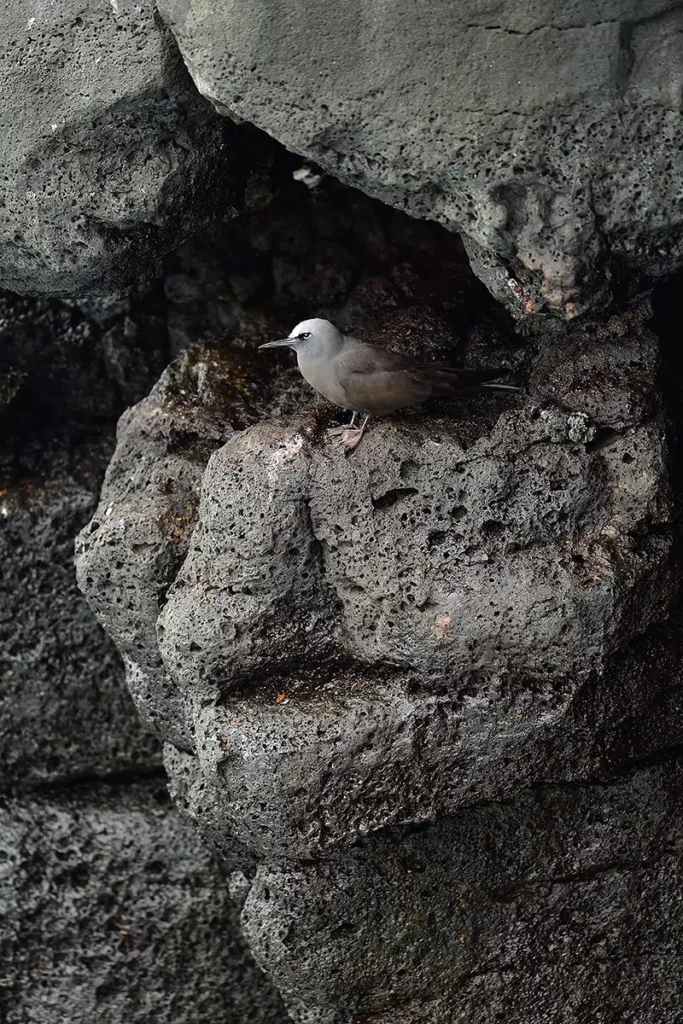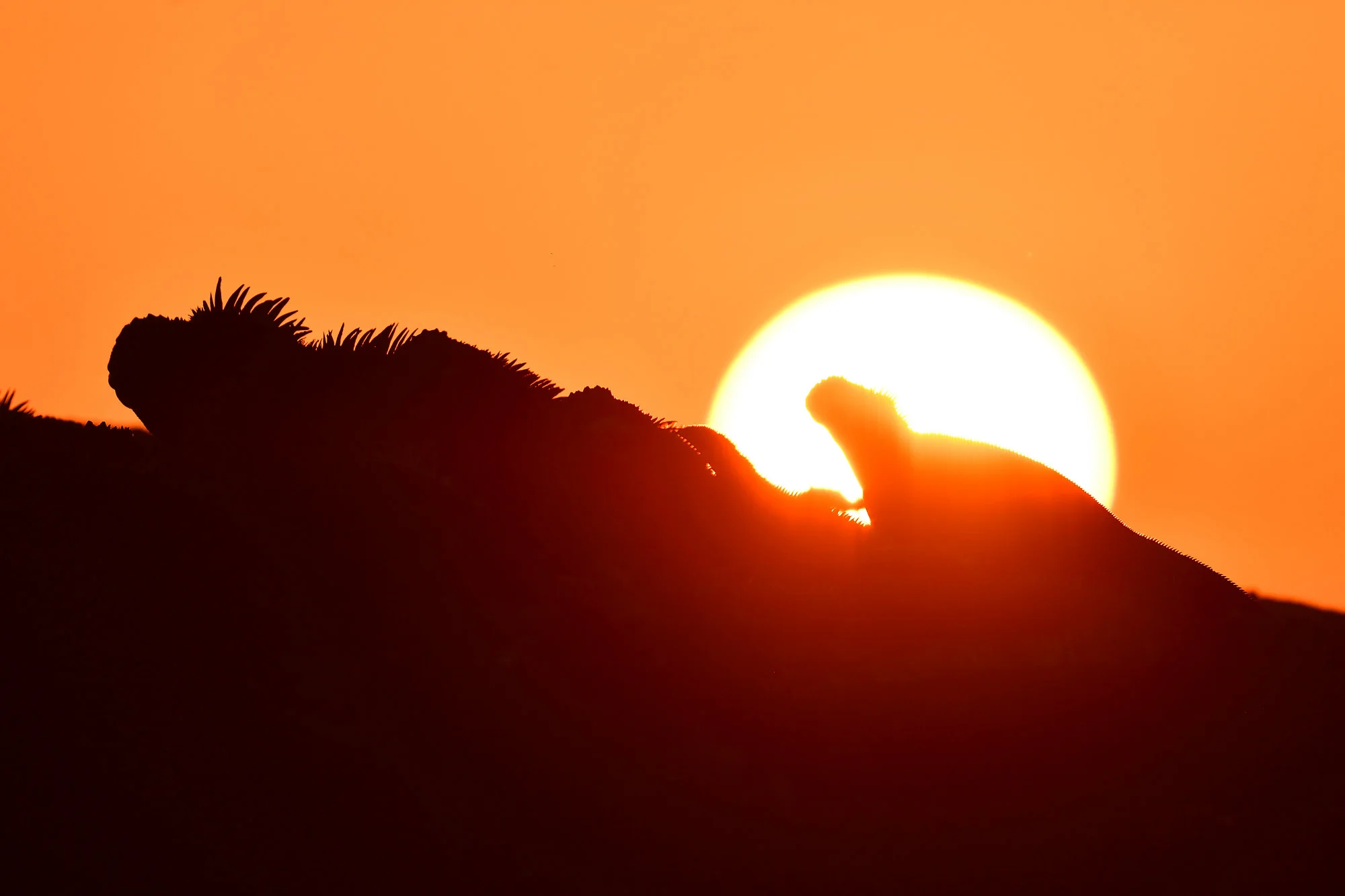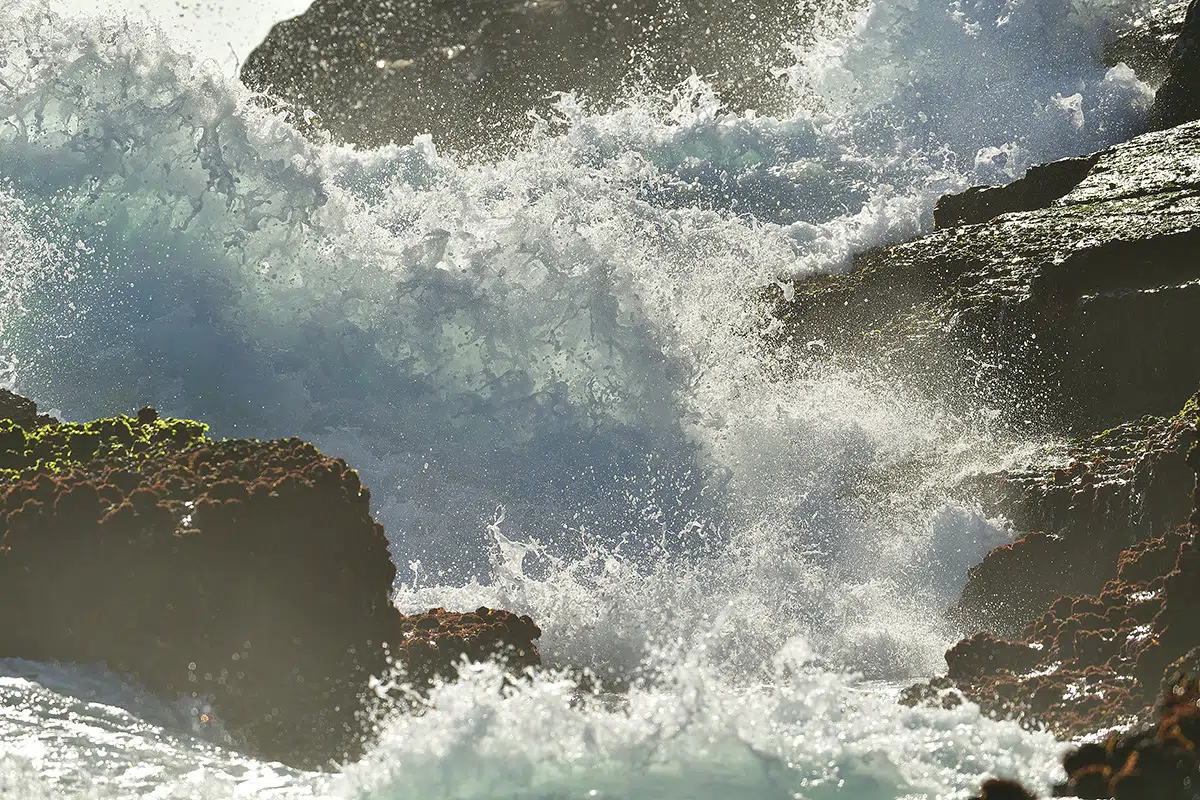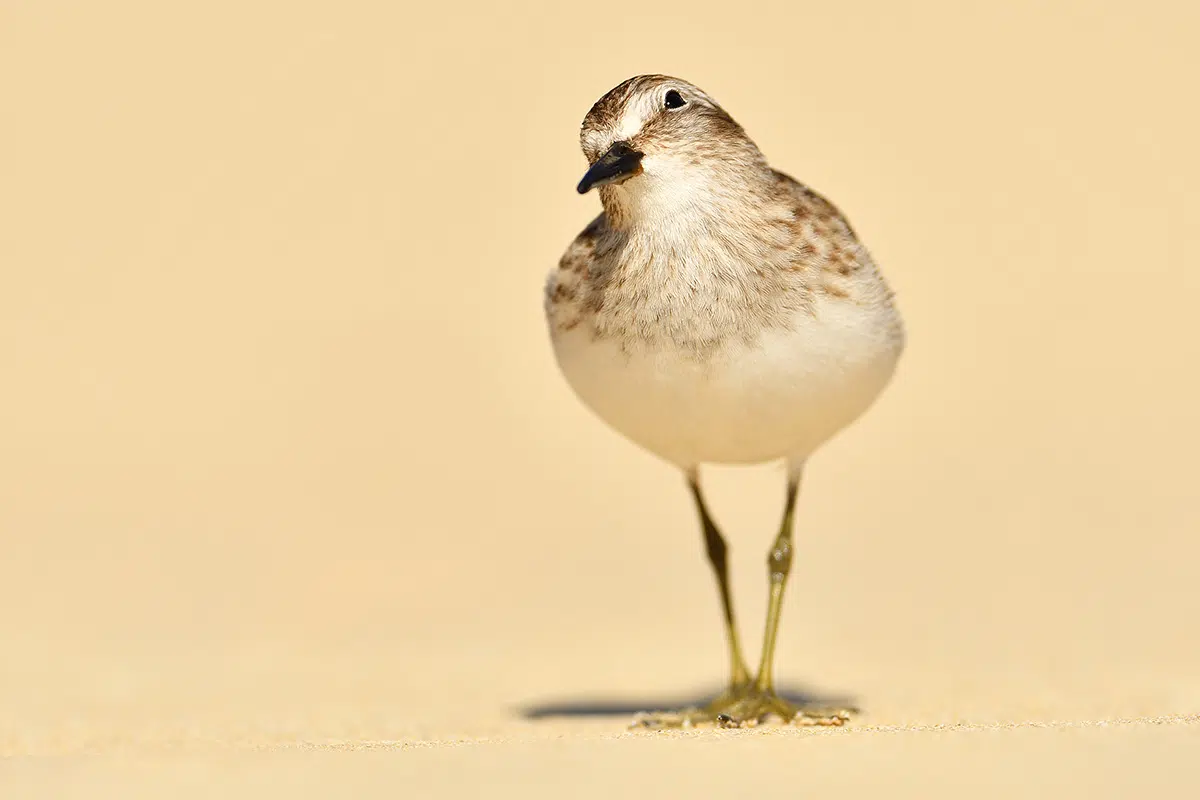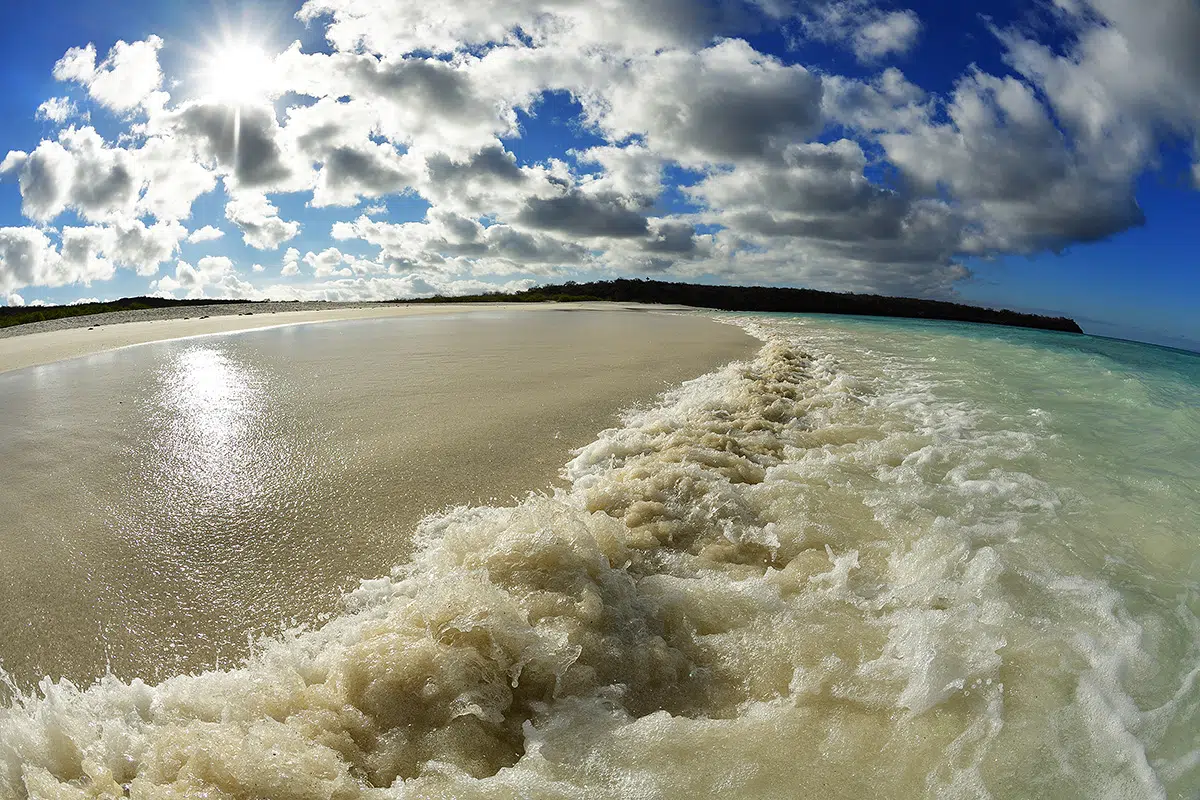Tour dates
From
To
Condition
Group size
Pricing
5950 euro
Schedule
Our local guide, Juan Manuel, awaits us on Baltra airport. He will drive us to the harbour where we embark our ship, The Samba. We’ll sail to Mosquera in the afternoon, where we are met by numerous Galapagos sea lions, sally lightfoot crabs and beautiful shorebirds.
Darwin Bay harbours a gigantic colony of tropical seabirds, many of which breed on the island. Prepare to get dazzled by frigatebirds, red-footed boobies, Nazca boobies, swallow-tailed gulls, tropicbirds and many other pelagic species. On top of the Prince Philip’s Steps, we discover the flight of the red-billed tropicbird, the acrobatic Galapagos shearwater and thousands of petrels. We might even see a short-eared owl hunting at daytime.
While all the boats set course to the south, The Samba heads west-northwest for some snorkelling, kayaking and dinghy sailing along the magical coasts of Marchena. We explore Playa Negra in the afternoon, where sea iguanas are looking for algae in the lava-caves. Afterwards, we sail west for 6 hours, out to the deep waters and the Cromwell current for some whale- and dolphin spotting.
Punta Albermarle is the only place in the world where the endemic Galapagos cormorant breeds. It also harbours the biggest sea iguanas the archipelago has to offer. During a hike along the many tuff cones and thick layers of lava on Punta Vicente Roca, we get to see the Galapagos penguin, blue-footed boobies and many other fascinating sea creatures. Snorkelling reveals true underwater magic.
Punta Espinoza is full of life, boasting countless sea iguanas and sea lions, Galapagos cormorants, little penguins, sally lightfoot crabs and so much more. The Galapagos buzzard is a fierce hunter, while we snorkel between the sea turtles to refresh after our volcano hike. We discover the iguanas of Urbina Bay in the afternoon.
Elizabeth Bay is a unique place, combining tropical mangrove with penguins. We’re on the lookout for the spotted eagle ray, sea turtles and many tropical fish. In the afternoon, we enjoy the sight of countless cactuses on Punta Moreno and discover stunning oases. The brackish water draws many magnificent birds to its shores such as flamingos, gallinules, black-necked stilts and Galapagos martins.
Hills of Floreana and panoramic view on top of Cerro Alieri. We sail to the exquisite snorkelling spot of Devils Crown in the afternoon and dine at Academy Bay in the evening.
The Santa Cruz highlands give us an overview of the tropical forest. Many Darwin finches, tree warblers, vermillion flycatchers and a rich diversity of plants can be seen around the crater.
Afterwards, we head back to Baltra airport. Farewell, Galapagos!
Partnership
REMARKABLE HISTORY
From a geological point of view, the Galápagos Islands are very young. They ‘only’ emerged a few million years ago and were discovered by chance in 1535. Ecuador annexed the archipelago a hundred years later. But it was Charles Darwin who really discovered the islands in 1835. This is when he set foot ashore and explored the islands for weeks. His extensive research of the fauna and flora formed the basis of his evolutionary theory. Because he noted the presence of several species of Darwin’s finches, he linked the isolation of the archipelago to the evolution of the species who lived there.
UNIQUE CLIMATE
The Galapagos Islands are characterised by extremes. The cold Humboldt Current brings in cold and eutrophic water, supporting an enormous ecosystem. But this changes every few years, because of the El Niño-phenomenon. Warm water comes in and the sea currents change. This causes a massive decline in the population of iguanas, seals, penguins and other species, and an absence of sea birds. Extreme climate changes that have, however, proven to be optimal for the emergence of new species. Evolutionary theory at work!
A PHOTOGRAPHER’S DREAM
The Galapagos Islands never disappoint photographers. Impressive landscapes and spectacular wildlife are united on the archipelago. It has been a protected Ecuadorian National Park since 1968. This measure has proven to be vital for the conservation of numerous unique species.
The broad deck of our ship and the limited number of guests ensure sufficient room for manoeuver. We offer the very best conditions to explore all the beauty the islands have to offer.
EXTRAORDINARY WILDLIFE
The Galapagos islands harbour many endemic species. There’s the famous sea iguana, whose black skin heats its body temperature every time it emerges from the cold waters. The giant tortoise is the largest species of tortoise on earth. And sea life along the coasts is absolutely abundant.
The iconic blue-footed booby, a Pacific species of gannet, is one of the hallmarks of the Galápagos. Most of the islands house several species of the famous Darwin finches. They are not the only species that have diversified on the island during evolution. For example, you’ll find 4 different species of mockingbirds. And how about that ivory black lava gull? In short, nature lovers and birdwatchers alike can rest assured when embarking on this adventure.
AN EXPERIENCED TEAM
I will guide this trip, together with nature photographer Jeffrey Van Daele and a very experienced local crew. Expedition leader Juan Manuel Salcedo grew up in the Galápagos Islands. He developed a passion for wildlife while sailing on his father’s boat. Studying the archipelago for many years, he attained a degree in ecology, specializing in biology and geology. He is always up-to-date with the regulations for protection of the fragile ecosystem. His crew guarantees a correct attitude in this National Park, undoubtedly the best-conserved archipelago of the tropics.
LOOKING FOR AN EVEN GREATER ADVENTURE?
Exploring the islands of Fernandina and Isabela means you mainly discover the west side of the archipelago. Curious about what the other islands have in store? Here’s your chance to find out! STARLING organises two consecutive trips to the Galapagos islands. If you register for both, you get a 5% discount. The ultimate adventure!
Discover our trip to San Cristobal and Española.
NATURE AND PHOTOGRAPHY
Photographers, nature lovers and bird watchers will all indulge themselves during this trip. We discover many endemic birds, explore the waters around the islands and photograph rare sea creatures. Each island is unique due to the volcanic landscapes. Our well-adjusted ship allows us to sail close to every island, assuring care-free photography. In short: this is the ultimate journey for anyone who wants to zoom in on the Galapagos under professional guidance.
ACCOMMODATION
The Samba houses 14 guests. This is the perfect number to fully experience the magic of the Galápagos Islands, because privacy and room for manoeuver are guaranteed. The latter is essential for exhaustive nature photography. The boat crew is very professional and kind. And your guides? We will always go the extra mile to show you the beauty of nature and share our best photography tips and tricks. A trip of a lifetime!
We charter the boat, which gives us more freedom to sail where we want.
Extra overnight stays and excursions in Ecuador – Quito are possible. We can supply an overview of all the options and extensions on demand.
CLIMATE AND CLOTHING
The cold season lasts from May to September, with an average temperature of 20°C. December to April brings really hot and dry weather, with an average temperature of about 32°C. We travel in-between seasons, so be prepared for both types of weather. It gets cold at night during both seasons, and rain is no exception. Be sure to bring sweaters and a raincoat.
Our hikes comprise several kilometres at most. Because of this, they are accessible for anyone with a normal physical condition. The volcanic terrain can be rough, so be sure to bring sturdy shoes.
